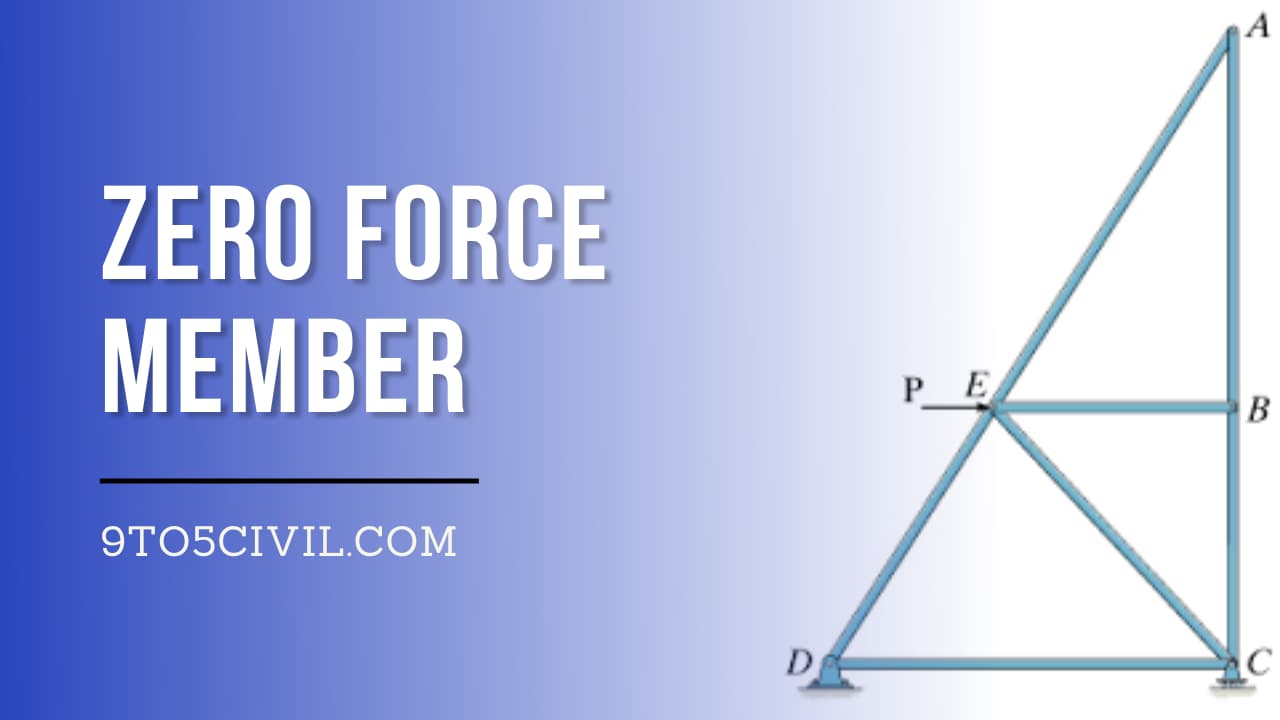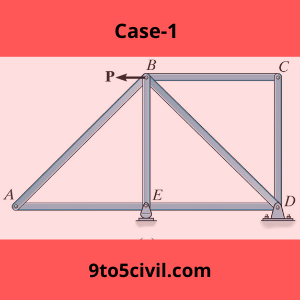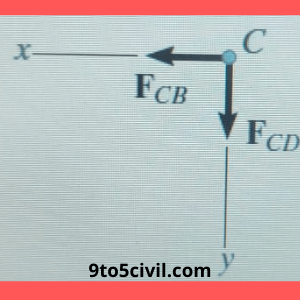
What Is Zero Force Member?
In a truss system, many parts include a member who does not take any force. It is a member called a zero force member.
The truss needs such a member to increase the truss’s stability and facilitate the process of truss analysis. In addition, the zero-force member helps to complete the truss.
Zero force member contributes to the stability of the truss structure by preventing buckling in the long span. Zero force members are used for truss stability and to increase rigidity.
Zero force members can carry loads to suit the situation in the truss. In addition, zero-force members can be used for loading adjustment during structure variation.
Some trusses have a zero force member attached to the pin joint. No external load is applied on such member. Often three or two zero force members are found in the truss.
Basic zero force members can be accomplished by analyzing the forces acting on individual pins in a physical system.
What Is Zero Force Member for Truss?
The function of zero force in the truss system can work with the complete stability of the truss.
Considering the long-time vision of the truss, zero force member is added to the truss.
Support is required for the stability of the truss during construction and if the design of the truss is improved. For this zero force members are kept while designing the truss.
Zero force members can be found by observing the structure of the truss.
Examples
Find the zero-force member from the given figure?
As shown in the figure above, if you observe, you will notice that there is no force in front of joint c.
Now for more understanding, we will draw its free diagram.
Now force FBC and FCD to appear on joint c. The value of both these forces is zero.
Hence FBC and FCD are known as zero-force members.
Identification of Zero Force Members in Truss
If two non-collinear members in a truss are found in an unloaded joint, those two members are considered zero-force members.
Similarly, if three members of a truss meet in an unloaded joint, then two members are considered collinear members, and the third member is a zero-force member.
Advantages of Zero Force Member
- Zero force members give stability to the truss for long thin members under compressive forces.
- Zero force member contributes to the stability of the truss structure by preventing buckling in the long span.
- Zero force members can carry loads to suit the situation in the truss.
- In addition, zero-force members can be used for loading adjustment during structure variation.
- Zero force members are used for truss stability and to increase rigidity.
- Zero force member is used to support different loading conditions.
Like this post? Share it with your friends!
Suggested Read –
- Best Cement Companies in India
- What Is Truss? | Method of Joint | Zero Force Member
- What Is Plaster? | Type of Plaster | Type of Plaster Finishes
- What Is Tension? | What Is Compression? | Difference Between Compression and Tension
- What Is Concrete Mix Ratio? | Type of Concrete Mix Ratio | Factor Affecting of Concrete Mix Ratio
Frequently Asked Questions (FAQ)
What Is a Zero Force Member in Civil Engineering?
Zero Force Member in Civil Engineering is a member of the Truss. This component does not experience stress or contraction. The zero-force member is frequently encountered in the truss at pin (any connection inside the truss) where no external load is applied and three or fewer truss members are found.
How Do You Identify Zero-Force Members?
There are two rules to look for when identifying zero-force members joints with three members where two of the members are parallel, and there is no external load. The third member will be zero-force. Joins with two members and no external load. Both members are zero force. The figure below has FIVE (5) zero-force members.
Determine Zero Force Member
Given below some useful tips to determine the zero-force members in truss structures:
- If a joint contains only two members without any external load or support, then those two members belong to zero-force.
- If a joint contains only two members and is loaded, then the line of action of a consequential force is applied.
- If a joint contains members without any external load and support, then when two of the members are lying in the same.
 Skip to content
Skip to content

